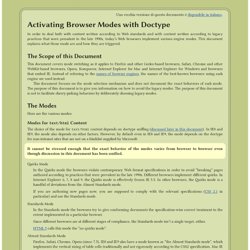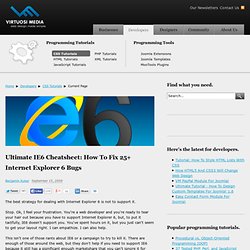

Firefox 4: HTML5 Forms. Firefox 4 will come with better support for HTML5 forms. In the latest beta we are experimenting with a set of new features: more inputs types (email, url, tel, search), new attributes (placeholder, autofocus, list), decoupled forms and different validation mechanisms. This is thanks mostly to the hard work of Mounir Lamouri. Some examples will work in other browsers, but you’ll need Firefox 4 beta to see all of them. New input field types In the same fashion as new HTML5 elements, we have new field types to better express what kind of input we want. In this beta, Firefox comes with four new kind of inputs : Of the four new input types, url and email will also validate their content. We also have support for a new kind of field: You can use this element to represent an area of the page that reacts to the interaction with a form.
Text fields have been improved with <datalist> support. New input attributes Autofocus When you add this to a field, it will receive focus as soon as possible. Url. CSS3 PIE: CSS3 decorations for IE. Mini simulator. Activating Browser Modes with Doctype. In order to deal both with content written according to Web standards and with content written according to legacy practices that were prevalent in the late 1990s, today’s Web browsers implement various engine modes.

This document explains what those modes are and how they are triggered. Summary for the Impatient The main conclusion to draw from this article is that you should start all your HTML documents (i.e. anything that gets served as text/html ) with <! DOCTYPE html> as the first thing in the source. (Read on to learn why.) If you want to take extra care to make sure that users of IE8, IE9 or IE10 cannot press a button that makes your site regress as if it was being viewed in IE7, either configure your server to send the HTTP header X-UA-Compatible: IE=Edge for text/html or put <meta http-equiv="X-UA-Compatible" content="IE=Edge"> in the head of your HTML documents (before any scripts).
The Scope of This Document The Modes Here are the various modes: Common Modes for text/html Content. Ultimate IE6 Cheatsheet: How To Fix 25+ Internet Explorer 6 Bugs. InShare33 The best strategy for dealing with Internet Explorer 6 is not to support it.

Stop. Ok, I feel your frustration. You're a web developer and you're ready to tear your hair out because you have to support Internet Explorer 6, but, to put it tactfully, IE6 doesn't support you. You've spent hours on it, but you just can't seem to get your layout right. This isn't one of those rants about IE6 or a campaign to try to kill it.
I've scoured the web for resources and also included some of my own fixes for IE6 and now I've put it all together in this cheatsheet/reference manual as a resource for anyone who has to deal with Internet Explorer 6. This massive IE6 guide took a while to put together, so bookmark it, share it, tweet it, and use it to save yourself and your coworkers hours of screaming at your monitor and banging your head against your desk or other inanimate objects. Update: Yann Faurie has graciously provided a French translation of this article. Table Of Contents Strategies.